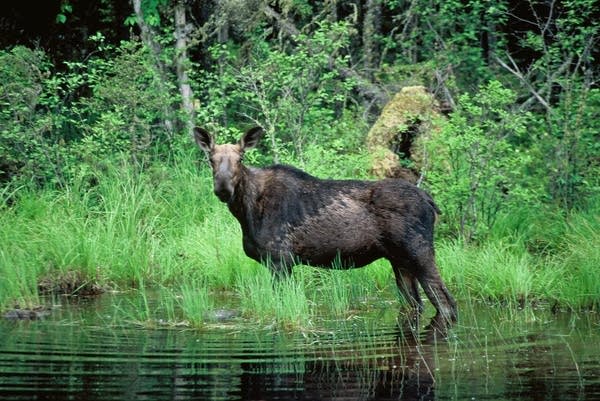DNR likely to cut number of moose hunt permits in half
Go Deeper.
Create an account or log in to save stories.
Like this?
Thanks for liking this story! We have added it to a list of your favorite stories.

Minnesota Department of Natural Resources officials say they'll likely reduce the number of moose hunting permits by half for this fall's moose hunting season.
The reduction comes in response to the latest moose population survey, which shows a continuing decline in moose numbers in northeast Minnesota.
Last year, 212 permits were issued for the bulls-only moose season. The DNR is expected to reduce that to a little more than 100 permits for the season that begins in October.
Tom Rusch, the DNR's area wildlife manager in Tower, said no clear answers explain why the moose population is falling.
Turn Up Your Support
MPR News helps you turn down the noise and build shared understanding. Turn up your support for this public resource and keep trusted journalism accessible to all.
"Unless something can get reversed, that trend is a slow, downward decline," he said. "Hopefully the research projects that we have coming online will start to give us some of the answers, of why do we have mortality rates that are higher than other places in North America."
Rusch said he doesn't expect a reduction in hunting permits to have much impact on the decline.
"What we do know through our ongoing moose study that hunting by state and tribal hunters plays a very small role in moose mortality in Minnesota," he said. "Right now we're looking at harvesting just 3 percent of adult bulls."
Researchers have observed high mortality in adults and calves. Most of the deaths are from unknown causes.
The survey shows about 4,900 moose in northeastern Minnesota. That's down from around 7,800 two years ago.




